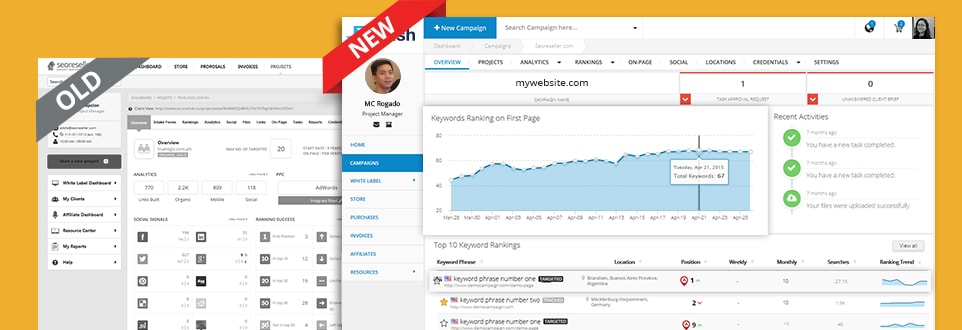With digital evolution accelerating at an unprecedented rate, Google has once again shifted the sands beneath website owners’ feet with the completion of its Mobile-First Indexing. This shift is more than a mere update; it’s an entirely new chapter in the ongoing search engine optimization (SEO) saga.
A revolution that sees Google prioritizing the mobile version of websites in its indexing and ranking system. This significant development has left many site owners wondering about its implications and how to adapt. This article will break down the nuances of Google’s Mobile-First Indexing and provide actionable insights for website owners navigating this new landscape.
What is Google’s Mobile-First Indexing?
Google’s Mobile-First Indexing is a fundamental shift in the way Google interprets and ranks web content. Traditionally, Google’s indexing systems assessed the desktop version of a website’s content to determine its relevance to a user’s query. However, Google uses the mobile version of a website’s content for indexing and ranking with Mobile-First Indexing. This move reflects the world’s migration towards mobile use, with more than half of global web traffic now coming from mobile devices.
This change emphasizes the need for websites to be mobile-friendly and suggests that mobile compatibility will significantly affect how a website performs in search results. For website owners, this means ensuring their mobile sites contain the same valuable and high-quality content as their desktop sites. It’s a change that demands attention, as websites that aren’t optimized for mobile could decline their search ranking.
When Did Google Start its Mobile-First Indexing?
Google implemented mobile-first indexing more than 6.5 years ago, removing the previously set deadline. Introduced in November 2016, the approach involves crawling and indexing websites from a mobile perspective. Half of the sites in Google’s search results were indexed through mobile-first indexing by December 2018.
In March 2020, before the lockdowns were implemented worldwide, Google announced the deadline for transitioning to mobile-first indexing for all websites. Initially set for September 2020, Google stated, “To simplify, we’ll be moving towards mobile-first indexing for all websites starting in September 2020.” However, in July 2020, Google extended the deadline again, pushing it to March 2021.
However, in May, Google revealed that transitioning sites to mobile indexing had been completed. As a result, this recent announcement stating that the transition is now “complete” seems somewhat perplexing.
What to Expect With This Change?
With the complete rollout of Google’s Mobile-First Indexing, there are several expectations that web owners need to bear in mind. Foremost, if your site isn’t fully optimized for mobile devices, it may experience a drop in Google’s search rankings. Since Google now prioritizes mobile-friendly sites, non-optimized sites might lose traffic due to lower visibility on search results.
Additionally, Google will only reference the mobile version of your website for indexing and ranking purposes. Therefore, any content not available on mobile, including text, images, and videos, will be effectively invisible to Google’s indexing bots. As a result, it might not contribute to your site’s search ranking.
Another critical expectation revolves around the user experience (UX). With this change, Google’s algorithms will look at the mobile version of your website first to evaluate its user experience. This means that factors like site load speed, button sizes, font readability, and navigation structure on mobile devices will impact your site’s rankings.
Lastly, websites with dynamic serving or separate URLs for mobile and desktop versions should ensure correct meta tags for mobile and desktop versions. Google recommends using the same meta robot tags on mobile and desktop sites.
With Google’s Mobile-First Indexing, the focus now shifts more than ever toward creating a comprehensive, user-friendly mobile website experience. It’s a pivotal point in SEO strategy, and website owners need to adapt quickly to this change to maintain their online visibility and performance.
Are There Any Changes with Google Search Console Reporting?
Website owners should be aware of changes in Google Search Console reporting. With the complete rollout of Mobile-First Indexing, Google has updated the data in Search Console’s crawl stats report to represent the data from the Google smartphone agent crawl. This means your crawl stats will now reflect Google’s view of your site from a mobile perspective.
Additionally, Google will send notices to website owners through the Search Console. These notices will inform site owners about the shift to mobile-first indexing for their sites. They will also contain details about any issues detected on the site and recommendations for improvements.
Website owners must pay close attention to these reports and updates to ensure their site is fully optimized for mobile-first indexing. The reports can help identify any areas of the site that might be hindering its performance in mobile search results.
In essence, Google Search Console is a valuable tool for navigating this transition and adapting your SEO strategy to this new mobile-first landscape. It’s recommended to regularly check your Search Console reports for essential insights and updates.



